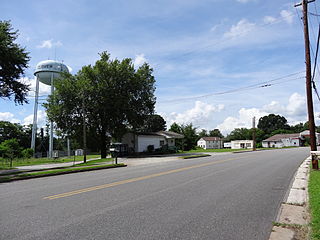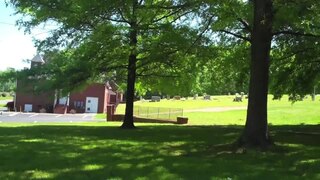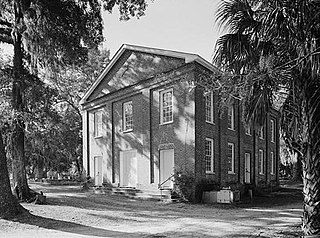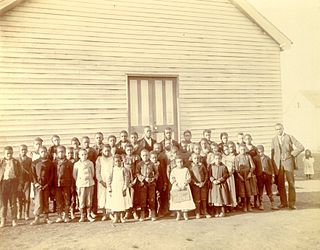
Cullowhee is a census-designated place (CDP) in Jackson County, North Carolina, United States. It is located on the Tuckasegee River, and the permanent population was 7,682 at the 2020 census up from 6,228 at the 2010 census.

Sanford is a city in Lee County, North Carolina, United States. The population was 30,261 at the 2020 census. It is the county seat of Lee County. The geographic center of North Carolina is located northwest of the city, in Chatham County.

Tuskegee University is a private, historically black land-grant university in Tuskegee, Alabama. It was founded on July 4th in 1881 by the Alabama Legislature.

William Kerr Scott was an American politician from North Carolina. A member of the Democratic Party, he was the 62nd governor of North Carolina from 1949 until 1953, and a United States Senator from 1954 until 1958.
Central Carolina Community College (CCCC) is a public community college with campuses in Chatham, Harnett and Lee counties. It is part of the North Carolina Community College System. It offered its first classes in 1961.

Clover is an unincorporated community and census-designated place (CDP) in rural Halifax County, Virginia, United States. The population as of the 2010 census was 438. Clover was an incorporated town from 1895 until 1998, when it reverted to unincorporated status. Clover was the site of a Rosenwald school, built around 1921 or 1922, with a three-teacher facility on a 2-acre campus.

The Rosenwald School project built more than 5,000 schools, shops, and teacher homes in the United States primarily for the education of African-American children in the South during the early 20th century. The project was the product of the partnership of Julius Rosenwald, a Jewish-American clothier who became part-owner and president of Sears, Roebuck and Company and the African-American leader, educator, and philanthropist Booker T. Washington, who was president of the Tuskegee Institute.

Dennis Alvin Wicker is an American lawyer and politician from Sanford who served as a member of the North Carolina House of Representatives (1981–1993) and as the 31st Lieutenant Governor of North Carolina (1993–2001). As lieutenant governor, he became the first statewide elected official to chair the State Board of Community Colleges, which sets policy for the state's 58-campus system. Wicker was also a member of the North Carolina State Board of Education and the State Board of Economic Development.

The Penn Center, formerly the Penn School, is an African-American cultural and educational center in the Corners Community on Saint Helena Island. Founded in 1862 by Quaker and Unitarian missionaries from Pennsylvania, it was the first school founded in the Southern United States specifically for the education of African-Americans. It provided critical educational facilities to Gullah slaves freed after plantation owners fled the island, and continues to fulfill an educational mission. Leigh Richmond Miner photographed students and activities at the school.

The Hope Rosenwald School, also known as Hope School, is a former school at 1971 Hope Station Road near Pomaria, South Carolina. As a Rosenwald School, it served rural African-American children in the early 20th century.

Liberty Colored High School is a former high school for African-American students in Liberty, South Carolina during the period of racial segregation. It originally was called Liberty Colored Junior High School. The building is now a community center known as the Rosewood Center. It is at East Main Street and Rosewood Street in Liberty. The school was built in 1937 on the site of a Rosenwald school that had burned down.

The South Carolina School for the Deaf and the Blind is a school in unincorporated Spartanburg County, South Carolina, United States, near Spartanburg and with a Spartanburg postal address. It was founded in 1849 by the Reverend Newton Pinckney Walker as a private school for students who were deaf. The School for the Blind was established in 1855, and the school became state funded in 1856.

Cadentown School in Lexington, Kentucky was a primary public school for black children in the segregated Fayette County Public Schools from about 1879 to 1922. The building that originally housed Cadentown School, located at 705 Caden Lane, is no longer extant. However, the Rosenwald Fund School is listed on the National Register of Historic Places in Fayette County.

Greensville County Training School, also known as the Greensville County Learning Center, is a historic Rosenwald school building located at Emporia, Virginia. It was built in 1929, and is a single-story, U-shaped brick building. It consists of a front hyphen that connects two wings containing classrooms, while an auditorium, office space, and a library form the interior central space. A classroom addition was constructed in 1934. It was constructed for the education of African-American students, and closed in the 1960s following desegregation of the public schools.

Harnett County Training School, also known as Harnett High School, is a historic school complex for African-American students located at Dunn, Harnett County, North Carolina. The complex was built between 1922 and 1956, and consists of one two-story and five single-story brick buildings. They include a gable front combined Gymnasium/Auditorium (1948); the two-story, 14 teacher, flat-roofed, Colonial Revival-style, Rosenwald-funded Harnett County Training School (1922); a detached brick boiler room (1950); two, one-story, flat-roofed Library and Office Building and Cafeteria buildings (1956); and a one-story, flat-roofed Rosenwald-funded classroom annex added in 1927, now designated the Education Building.
The Fargo Training School in Fargo, Arkansas was founded as a private school initially known as the Fargo Agricultural School. It was an historically important school from the segregation era, and its surviving campus was listed on the National Register of Historic Places in 2010. The campus includes five historic buildings.
Warren County Training School is a historic Rosenwald School located near Wise, Warren County, North Carolina. It was built in 1931, and is a large, one-story, nine classroom brick school. It measures approximately 222 feet by 58 feet, with a rear wing measuring 42 feet by 59 feet. Also on the property are the contributing teacherage (1925), brick cafeteria building, and brick agricultural building. The complex continued to operate as a school until 1970. The Warren County Training School is one of 25 schools that were constructed using Rosenwald funds in Warren County.

Hopewell School, also known as the Hopewell Rosenwald School, is a former African American school in Bastrop County, Texas, United States. that was built in 1921–1922, a time of racial segregation in the United States. The school was listed on the National Register of Historic Places on July 15, 2015 and designated a Recorded Texas Historic Landmark in 2022.
Henderson High School was a public secondary school in Starkville, Mississippi. United States. It served as the high school for black students until the public schools were integrated in 1970. Grades k–8 were also located on the same property. After integration, the buildings served as a junior high school and later as an elementary school.

Eleanor Roosevelt School, also known as the Eleanor Roosevelt Vocational School for Colored Youth, Warm Springs Negro School, and the Eleanor Roosevelt Rosenwald School, which operated as a school from March 18, 1937 until 1972, was a historical Black community school located at 350 Parham Street at Leverette Hill Road in Warm Springs, Georgia. As of May 3, 2010, the school is listed on the National Register of Historic Places listings in Meriwether County, Georgia.




















